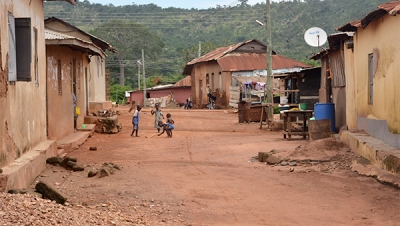
A rural area is an open swath of land that has few homes or other buildings, and not very many people.
A rural areas population density is very low. Many people live in a city, or urban area. Their homes and businesses are located very close to one another. In a rural area, there are fewer people, and their homes and businesses are located far away from one another.
Agriculture is the primary industry in most rural areas. Most people live or work on farms or ranches. Hamlets, villages, towns, and other small settlements are in or surrounded by rural areas.
Wildlife is more frequently found in rural areas than in cities because of the absence of people and buildings. In fact, rural areas are often called the country because residents can see and interact with the country’s native wildlife.
Throughout the world, more people live in rural areas than in urban areas. This has been changing rapidly, however. Urbanization is happening all over the world. In Asia, for example, the United Nations estimates that the urban population will increase by almost 2 billion by 2050.
Open spaces:
These are common in rural areas. Some are conservation areas that are specially protected. The purpose of an open space reserve may include the preservation or conservation of a community or region’s rural natural or historic character; the conservation or preservation of a land or water area for the sake of recreational, ecological, environmental, aesthetic, or agricultural interests; or the management of a community or region’s growth in terms of development, industry, or natural resources extraction.
Facilities:
Rural areas often have few or no shops, hospitals, or post offices. Peoples may have to travel to the city to find them. People in rural areas generally have less access to healthcare than their urban counterparts. Fewer medical practitioners, mental health programs and healthcare facilities in these areas often mean less preventative care and longer response times in emergencies. The lack of healthcare workers has resulted in unconventional ways of delivering healthcare to rural dwellers, including medical consultations by phone or internet as well as mobile preventative care and treatment programs. There have been increased efforts to attract health professionals to isolated locations, such as increasing the number of medical students from rural areas and improving financial incentives for rural practices.
Settlements:
Settlement refers to the physical spaces and environments in which households are sheltered, and how one shelter relates to others. The term is generally used in the context of displaced populations to describe the temporary or sometimes permanent living arrangements of displaced families. In this context settlements can range from planned camps to dispersed accommodation in host villages/neighbourhoods, collective centres, and spontaneous camps, etc.
A rural settlement is where displaced populations settle on land outside of cities and towns. The population is often dependent on agricultural and pastoral practices, and has fewer community infrastructure systems than in urban settlements.
Agricultural:
A lot of the land in rural areas is used for growing crops and rearing animals for food. In rural areas throughout the world, agriculture represents the predominant land use and a major component of the viability of rural areas. Farming and related activities make up the basic fabric of rural life, contributing significantly to the overall state of rural regions in terms of employment and business opportunities, infrastructure and quality of the environment.
Picture Credit : Google
